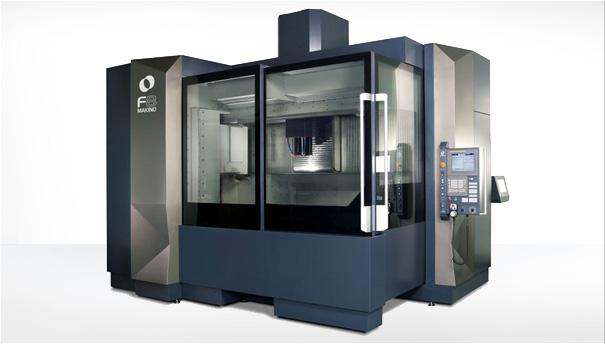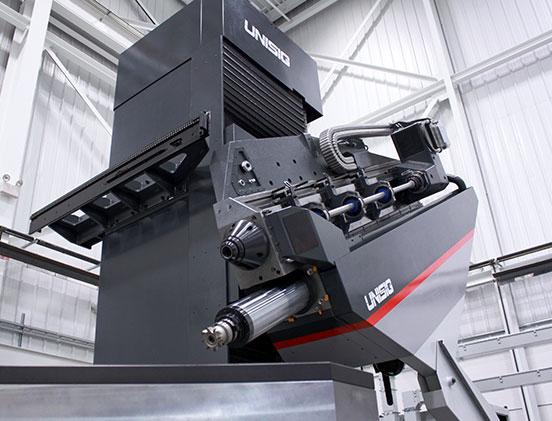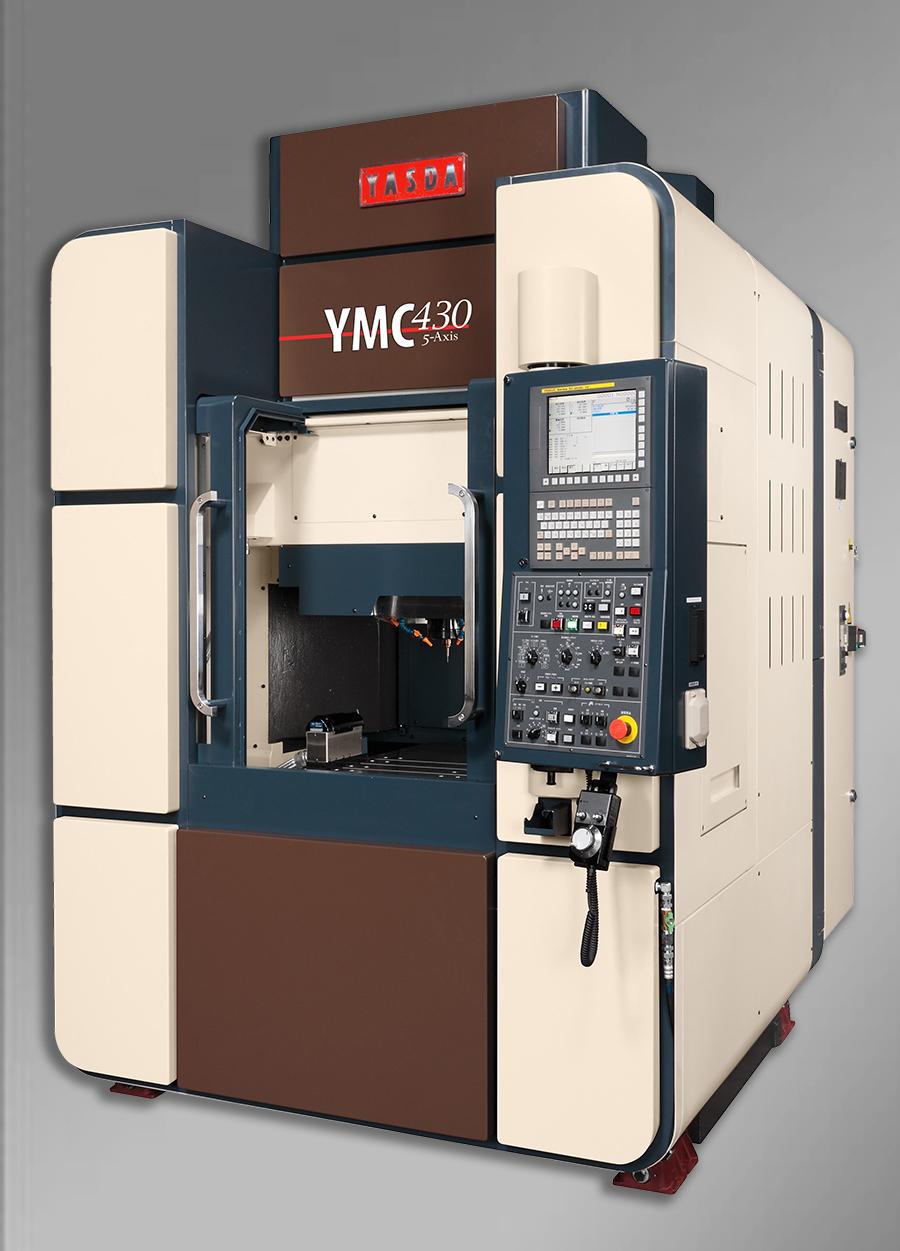- FMA
- The Fabricator
- FABTECH
- Canadian Metalworking
Molding a new reality
If 3D printing is viewed as a technology for tomorrow, automation is having an impact right now.
- By Nate Hendley
- March 12, 2015
- Article
- Metalworking
Industry experts offer new tools, techniques and strong opinions about industrial molds. According to these pundits, automation is hot while 3D printing is not—at least for the time being.
If 3D printing (also known as additive manufacturing) is used at all in the mold world, it’s to make prototypes, says David Palmer, sales manager at Build-A-Mold in Windsor, Ontario.
“From our business of building molds, it’s not there yet…if you’re going to produce 100,000 parts, you’re certainly not going to go with a 3D printer,” states Palmer.
“We’re a machine company. We really don’t get into additive [manufacturing]. We’re kind of afraid it might dilute our efforts in the machine world, to be honest,” adds Jim Endsley, product specialist for machining centers, at Okuma America Corp., in Charlotte, North Carolina.
That said, Endsley doesn’t dismiss the technology out of hand, “in 15 to 20 years, [3D printing] is probably going to be commonplace” in mold manufacturing, he states.
Toni Hansen, president of Aalbers Tool and Mold in Oldcastle, Ontario says much the same.
“We purchased a 3D printer six months ago. We use this for customers in need of a quick prototype or a few parts for something specific. As this technology progresses, the industry will be able to utilize these parts in more areas. Once mass production is achieved—if that is possible—it will dramatically change the landscape of tool-builders,” states Hansen.
If 3D printing is viewed as a technology for tomorrow, automation is having an impact right now.
“We’re seeing more and more automation in die-mold. Automation is starting to take hold … I think it helps create a predictable process. It takes some of the guesswork out of what used to be a kind of black art. Now we’ve entered more of an engineering realm,” states Greg Pozzo, vertical machining center application team leader at Makino in Auburn Hills, Michigan.
With that in mind, here’s a look at what’s new and/or noteworthy in terms of machining molds:
OKUMA AMERICA CORPORATION
For die and mold work, Endsley recommends Okuma’s relatively new MU-6300V and MU-500VII vertical five-axis machines.
These machines “are becoming very, very popular with mold shops,” he states.
The MU-6300V offers highly-efficient and productive five-axis, multi-sided machining.
This VMC has a highly rigid and accurate double column structure and can do both heavy duty cutting and high speed finishing.
The MU-6300V has a rapid traverse of 50 m/min or 1,969 ipm, a magazine capacity of 32 tools (with an option for 48 or 100-tools) and a work envelope measuring 36 inches x 41 inches x 23 inches.
The MU-500VII also boasts a double column structure and full NC five-axis simultaneous control. This machine comes with a high speed, high power, 40 taper 8,000 rpm spindle, high-speed 20-position automatic tool changer and 1,574 ipm rapid traverse. Okuma’s Five Axis Auto Tuning System, designed to boost five-axis machining accuracy, can be used on both the MU-6300V and the MU-500VII. The Auto Tuning System utilizes a touch probe and datum sphere to measure geometric errors that can negatively impact the machining process.
HAAS
Haas Automation of Oxnard, California has a five-axis universal machining center, a powerful new spindle and a chip-clearing system that can all be utilized by moldmakers.
“Our new UMC-750SS five-axis universal machining center, just released for production, is suitable for mold making applications.
The UMC-750SS is a super speed version of our very popular UMC-750. It comes standard with a 15,000 rpm inline direct-drive spindle, 1,200 ipm rapids on all axes, a high speed sidemount tool changer, and a high-speed, dual-axis trunnion table,” says Scott Rathburn, marketing product manager, Haas.
The 40 taper UMC-750SS has travels of 30 inches x 20 inches x 20 inches and a high speed, 40 + 1 tool side-mount tool changer.
Forty-taper spindles capable of 15,000 rpm, meanwhile, are now standard features on all new Haas VM series machines, says Rathburn.
“Something else we’ve introduced that is applicable to mold making is our Through Tool Air Blast option (TAB), which provides high flow/high pressure air through the tool to clear chips during dry machining,” says Rathburn.
Molds are commonly produced through dry machining methods, making the TAB option, “a good alternative to coolant in mold applications,” adds Bryan O’Fallon, product technical specialist, milling at Haas.
MAKINO
Makino operates a Die/Mold Technologies Center in Auburn Hills, Michigan. This 40,000 square foot facility is packed with researchers, technicians, sales staff and trainers all devoted to die and mold making. An auditorium offers space for presentations, technical training and seminars when Makino has diemold information it wants to share.
The Technologies Center was deliberately situated close to the twin hubs of automotive manufacturing in Windsor and Detroit, says Pozzo.
“Windsor is a hot-bed of mold activity,” he notes.
In terms of moldmaking gear, Pozzo pointsto Makino’s F8 and F9 vertical machining centers. The F-Series boast a rigid mechanical structure and is “ideal for precision die mold machining,” according to Makino literature.
To this end, the F8 and F9 models can handle large die/mold components.
The smaller F8 has x, y and z axis travels of 51.2 inches, 31.5 inches and 25.6 inches, a 61 inch by 31.5 inch table and can take a workpiece 61 inches long by 31.5 inches wide by 21.7 inches tall. The larger F9 has x, y and z travels of 63 inches, 31.5 inches and 25.6 inches, a table measuring 72.8 inches by 31.5 inches and can take a workpiece 72.8 inches long by 31.5 inches wide by 21.7 inches tall.
Both the F8 and F9 have a payload capacity of 5,510 pounds and a 30-tool capacity automatic tool changer. The standard spindle configuration is a 49.6 hp, 10,000 rpm, CAT 50 spindle.
The two VMCs can be fitted with Super Geometric Intelligence (SGI.4) software, which helps guide high-feed rate and tight-tolerance machining of complex, 3D contoured shapes.
Makino has a few new initiatives in the die-mold area.
All will be revealed in due course at the Makino Tech Expo, scheduled for September at the Auburn Hills facility, he says.
UNISIG
Move over five axis! UNISIG of Menomonee Falls, Wisconsin, a manufacturer of deep-hole drilling systems, has developed a seven-axis deep hole drilling and machining center.
“The seven-axis USC-M38 and USC-M50 deep hole drilling and machining centers are ideal for machining molds with drastically less set-up required”, says Ryan Weister, mechanical design engineer at UNISIG.
The larger UMC-M50 was the first model to be released. It is now complemented by the release of the smaller USC-M38. The M50 is capable of drilling and machining all four sides of a three meter long workpiece while the M38 is capable of machining all four sides of a two meter long workpiece without repositioning.
“The ability of the USC-M series machines to utilize two independent spindles, one for gundrilling and BTA drilling, and a second CAT50 machining spindle, greatly increases the capabilities of the M-series machines. When this additional capability is combined with a rotatory workpiece table and programmable headstock, manufacturers are able to combine multiple operations into one machine. The seven axes of control provide 3 + 2 machining to make easy work of deep hole drilling and machining of compound angles,” says Weister.
The seven axis of control are:
- b axis:360 degree rotary table
- a axis: rotary headstock +30/- 15 degrees
- x axis: standard for the table
- y axis: the vertical column
- z axis: moves the whole column back and forth to allow rotation of the workpiece
- w axis: combined gundrilling and BTA deep hole drilling spindle
- u axis: machining axis
The USC-M Series machines productively utilize BTA deep hole drilling tooling to drill water line holes at rates five to seven times faster than traditional gundrilling.
The M-series machine was designed to support the large CAT 50 machine quill, making all standard milling functions available within the working envelope of the system. UNISIG offers a full complement of options to further enhance the milling and machining functions: full enclosure guarding, a high volume mist collector for machining parts with oil on them, a 120 position automatic tool changer, a laser tool pre-setter, and probing.
“The M-series machine will produce more chips, faster, in less floor space with fewer operators,” says Weister.
METHODS MACHINE TOOLS
Methods Machine Tools of Sudbury, Massachusetts offers two new machines from Japanese firm Yasda suitable for mold making.
The Yasda YMC 430 Ver. II is a micro machining center that is “ideal for the ultra-precise manufacturing and high surface finishes required on small, complex features in components and dies and molds in industries such as medical and semi-conductor,” says Steve Previti, Yasda product manager for Methods.
The YMC 430 Ver II boasts a high-speed, 40,000 rpm HSK-E32 spindle and is available in three or five-axis. This micro center has x, y, z travels of 16.5 x 11.8 x 9.8 inches with a work table surface of 23.6 x 13.8 inches. An automatic tool changer holds 32 tools, with a 90-tool option.
Methods recently introduced the Yasda YBM Vi40 five-axis vertical CNC jig boring-milling machine.
“The YBM Vi40 five-axis has many impressive features for high accuracy, hard milling applications of complex dies, molds and components in industries such as aerospace, defense, automotive, medical, electronic and more. It produces surface finishes which meet extremely tight tolerances that in many instances do not require secondary finishing operations,” says Previti.
The YBM Vi40 features a 24,000 rpm, 40-taper direct-drive spindle and has x, y, z travels of 35.4 x 19.7 x 17.7 inches, a vertical rotation of 360 degrees and a horizontal rotation of +/- 100 degrees. An automatic tool changer holds up to 60 tools with a 100-tool option.
GF MACHINING SOLUTIONS
GF Machining Solutions of Lincolnshire, Illinois recently introduced the AgieCharmilles CUT 200/300 MoldTech series of wire EDMs for making molds.
These machines provide accurate, efficient machining of complex parts of varying surface heights or taper cuts. They can be used to machine challenging components for plastic injection molds and aluminum extrusion dies.
The wire EDMs boast a dedicated onboard AgieCharmilles AC CUT HMI (human-machine interface) designed to reduce setup time and boost productivity.
The series includes the CUT 200 mS, CUT 200 Sp, CUT 300 mS, and the CUT 300 Sp.
About the Author
subscribe now


Keep up to date with the latest news, events, and technology for all things metal from our pair of monthly magazines written specifically for Canadian manufacturers!
Start Your Free Subscription- Trending Articles
Identifying the hallmarks of a modern CNC

Zoller to host 2024 Open House and Technology Days

Wheel line expanded to accommodate heavy-duty industries

Tooling for spot facing and counterboring is completely customizable

Collet chuck provides accuracy in small diameter cutting

- Industry Events
MME Winnipeg
- April 30, 2024
- Winnipeg, ON Canada
CTMA Economic Uncertainty: Helping You Navigate Windsor Seminar
- April 30, 2024
- Windsor, ON Canada
CTMA Economic Uncertainty: Helping You Navigate Kitchener Seminar
- May 2, 2024
- Kitchener, ON Canada
Automate 2024
- May 6 - 9, 2024
- Chicago, IL
ANCA Open House
- May 7 - 8, 2024
- Wixom, MI





















